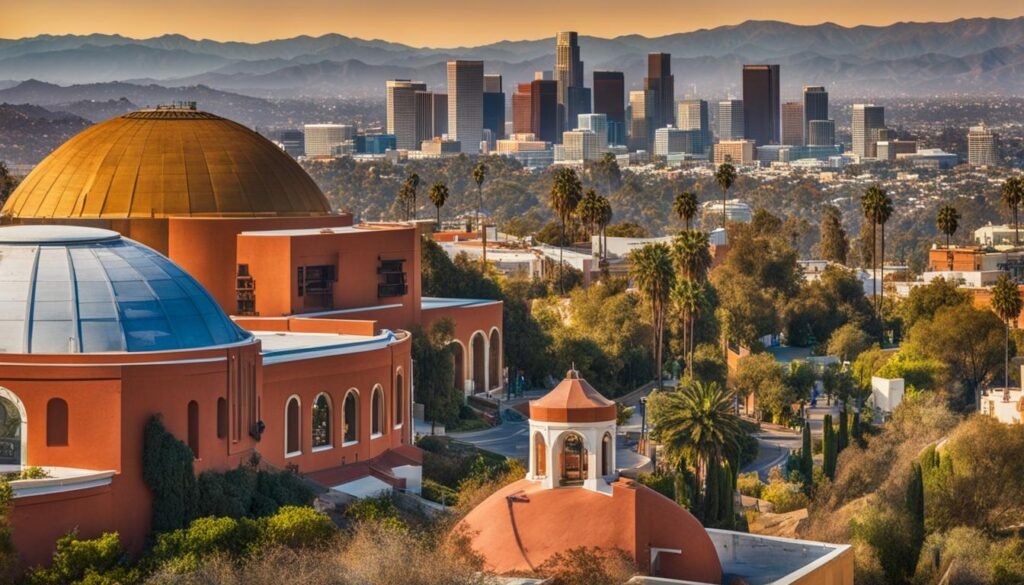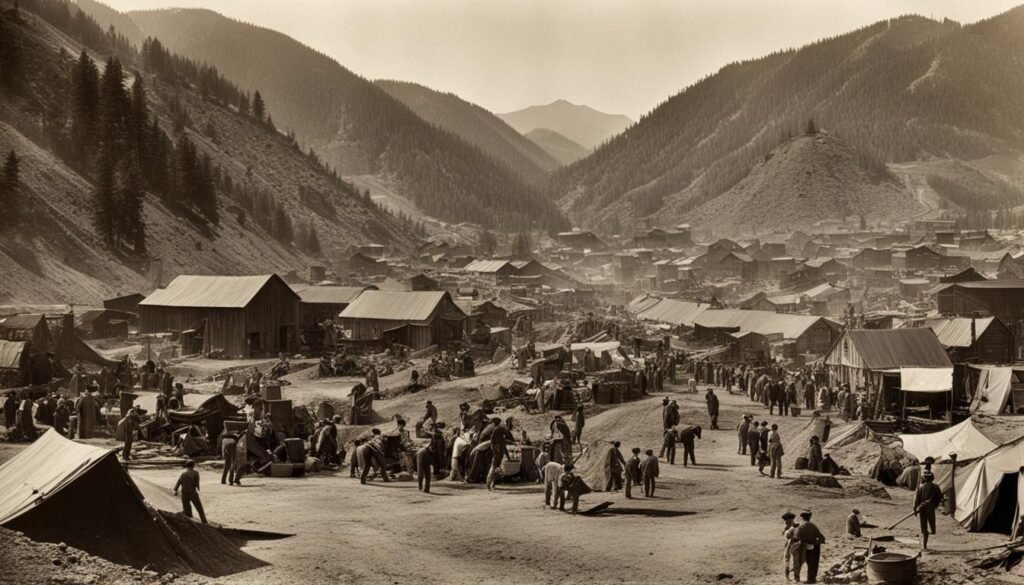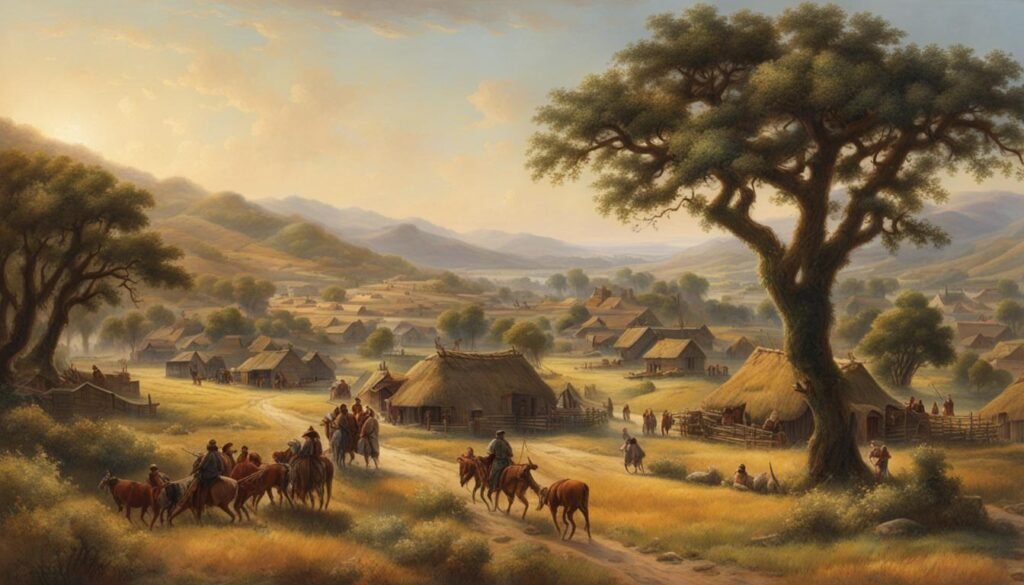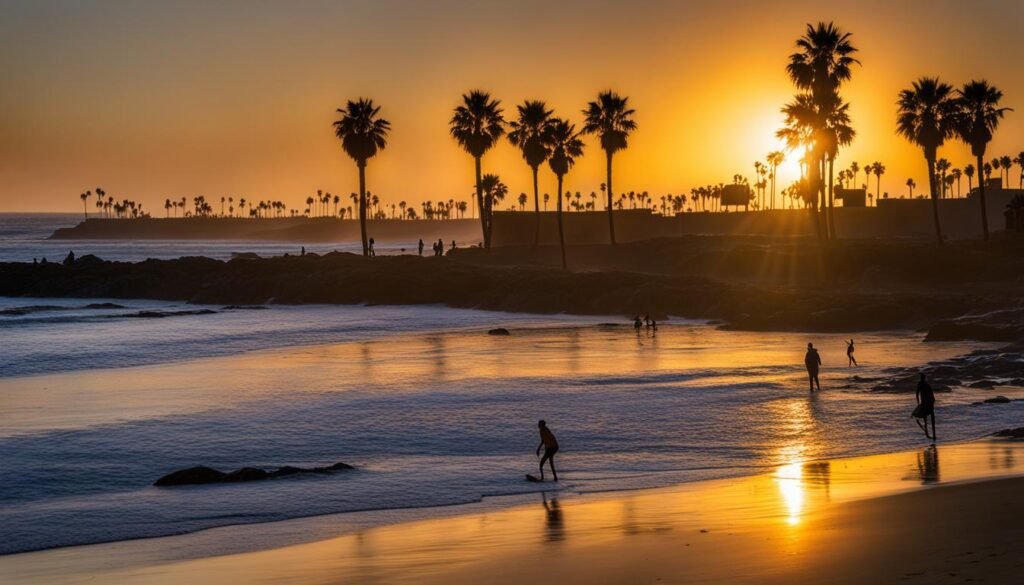Greetings! Welcome to a journey through the captivating history of Los Angeles, a city renowned for its glitz and glamour. Beyond the fame and splendor, Los Angeles County, CA has a fascinating past that spans centuries and encompasses a rich blend of cultures and influences.
Let’s begin by taking a step back in time, to the earliest inhabitants of Los Angeles County. The history of this region dates back thousands of years to the first Native American settlements. The Tongva people, who lived in the area for over 8,000 years, established a vibrant culture and complex social structure.
In the 16th century, Spanish explorers arrived, encountering the Tongva people and establishing missions in the area. One of the most famous missions, Mission San Gabriel Arcángel, founded in 1771, still stands today as a National Historic Landmark, showcasing the early colonial history of Los Angeles County.
The late 19th century marked a turning point in the county’s history, with the discovery of oil leading to a population boom and the birth of new industries. One of the most significant developments was the birth of the film industry in Hollywood. Nestor Studios, which opened in 1911, marked the beginning of Hollywood’s rise to fame, making Los Angeles the entertainment capital of the world.
Los Angeles County is not only home to Hollywood and its glamorous movie industry but also boasts numerous museums and historic sites that offer a glimpse into its past. From the Natural History Museum, with its extensive collection of fossils and exhibits on the history of the region, to the Getty Center, showcasing art masterpieces from different periods, Los Angeles County celebrates its diverse heritage.
Speaking of diversity, Los Angeles County cherishes and embraces its multicultural identity. The Japanese American National Museum, the Museum of Latin American Art, and the California African American Museum are just a few of the cultural establishments that honor the contributions of different communities within the county.
Efforts are being made to preserve the historic landmarks of Los Angeles County and promote cultural diversity. The Los Angeles Conservancy and the Los Angeles County Arts Commission play vital roles in protecting architectural heritage and fostering a vibrant cultural scene.
Join me on this captivating journey through the history of Los Angeles as we uncover fascinating stories, explore iconic landmarks, and celebrate the cultural tapestry that makes this city one of the most vibrant and intriguing in the world.
Key Takeaways:
- Los Angeles County has a diverse and rich history that goes beyond its fame as the entertainment capital of the world.
- The region was first settled by Native American tribes, and later influenced by Spanish colonizers who established missions.
- The discovery of oil in the late 19th century led to a population boom and the rise of the film industry in Hollywood.
- Los Angeles County is home to numerous museums and historic sites that offer insights into its past, including the Natural History Museum and the Getty Center.
- The county celebrates its cultural diversity through establishments like the Japanese American National Museum and the California African American Museum.
- Preservation efforts by organizations like the Los Angeles Conservancy help protect the county’s architectural heritage and promote cultural diversity.
- Exploring the history of Los Angeles allows us to discover the vibrant tapestry that makes this city one of the most fascinating in the world.
Native American Settlements and Early Spanish Influence
In exploring the rich history of Los Angeles County, it is impossible to overlook the deep-rooted Native American settlements that date back thousands of years. The first inhabitants of the area were the Tongva people, who thrived in the region for over 8,000 years. The Tongva people had a vibrant culture and a complex social structure that left a lasting impact on the area.
In the 16th century, Spanish explorers arrived in Los Angeles County and encountered the Tongva people. This encounter led to the establishment of missions in the area. One of the most famous missions is Mission San Gabriel Arcángel, founded in 1771. Today, it stands as a National Historic Landmark, offering visitors a glimpse into the colonial history of Los Angeles County.
The influence of Native American settlements and early Spanish presence can still be felt throughout Los Angeles County. These historical facts contribute to the rich tapestry of the region, shaping its culture, architecture, and daily life.
The Rise of Hollywood and the Film Industry
In the late 19th century, Los Angeles County experienced a population boom thanks to the discovery of oil. This newfound prosperity paved the way for the rise of new industries, including the world-renowned film industry.
1911 marked the beginning of Hollywood’s ascent to fame, with the opening of Nestor Studios in the heart of the city. This pioneering move established Hollywood as the premier destination for filmmaking and set the stage for its transformation into the entertainment capital of the world.

Today, Hollywood boasts iconic landmarks like the TCL Chinese Theatre, where Hollywood stars leave their handprints and footprints, and the legendary Hollywood Walk of Fame, adorned with thousands of stars honoring the entertainment industry’s biggest names.
Los Angeles County has served as the backdrop for numerous famous events in history, showcasing its significance beyond the realms of cinema. One such event is the Zoot Suit Riots, which unfolded in 1943 and highlighted social tensions and discrimination against Mexican American youth.
Museums and Historic Sites
Los Angeles County is home to a wide range of museums and historic sites that offer a captivating glimpse into its rich past. Whether you’re a history enthusiast or simply curious about the city’s heritage, these destinations are must-visit attractions during your time in LA.
The Natural History Museum of Los Angeles County stands as the largest natural and historical museum in the western United States. Immerse yourself in the fascinating exhibits that showcase the region’s diverse flora and fauna, including captivating displays of dinosaurs, gems, minerals, and, of course, the history of Los Angeles County itself.
If art is more your style, don’t miss the Getty Center. This renowned museum is not only known for its impressive collection of art from various time periods and cultures, but it also offers stunning views of the city and boasts beautiful gardens that you can leisurely explore.
For those with an insatiable curiosity for space exploration, the California Science Center is a must-see. Home to the Space Shuttle Endeavour, the center offers interactive exhibits that take you on a journey through the wonders of outer space.
Aside from museums, Los Angeles County also boasts numerous historic sites that offer a glimpse into the city’s storied past. The Los Angeles Union Station, a historic transportation hub, is a prime example. Marvel at its stunning architecture that blends Art Deco, Spanish Colonial Revival, and Mission Revival styles.
Another iconic historic site is the Bradbury Building, famous for its architectural grandeur and notable appearances in various films, including “Blade Runner.” Step inside and be transported to another era as you admire the building’s intricate ironwork and enchanting natural lighting.
When visiting Los Angeles County, don’t miss the opportunity to explore these remarkable museums and historic sites that bring the city’s past to life. From learning about the region’s natural history to delving into its artistic and architectural heritage, these attractions offer an enriching and immersive experience.
Cultural Diversity and Establishments
Los Angeles County boasts a vibrant cultural landscape, thanks to its diverse population and numerous establishments that celebrate different cultures and traditions.
The Japanese American National Museum stands as a testament to the history and cultural heritage of Japanese Americans. Through its exhibitions and collections, visitors can gain a deep understanding of the contributions and experiences of this community.

For art enthusiasts, the Museum of Latin American Art is a must-visit. Its extensive collection showcases contemporary and modern art from Latin America, allowing visitors to explore the diverse artistic expressions and narratives of the region.
The California African American Museum is dedicated to preserving the contributions of African Americans to California’s history. With over 4,000 artifacts on display, the museum offers an immersive experience that spans historic events, cultural achievements, and social movements.
Los Angeles County is also home to several historical neighborhoods that reflect its cultural diversity. One such neighborhood is Boyle Heights, often referred to as the Ellis Island of the West Coast. Known for its distinct architecture and vibrant community spirit, Boyle Heights serves as a living testament to the county’s rich cultural heritage.
Preservation of History and Cultural Diversity
As Los Angeles County continues to grow, efforts are being made to preserve its historical landmarks and promote cultural diversity. Organizations like the Los Angeles Conservancy and the Los Angeles County Arts Commission play vital roles in these endeavors.
The Los Angeles Conservancy is a non-profit organization dedicated to protecting and revitalizing the architectural heritage of the county. Through advocacy, education, and restoration projects, the conservancy ensures that iconic structures and historic neighborhoods are preserved for future generations to enjoy. They also offer tours of some of the most significant and architecturally stunning buildings in the area, allowing visitors to experience the rich history of Los Angeles County firsthand.
The Los Angeles County Arts Commission is committed to promoting and supporting cultural diversity in the county. They facilitate various programs and initiatives that highlight the artistic contributions of diverse communities. From public art installations to cultural festivals and performances, the commission strives to create an inclusive and vibrant cultural landscape in Los Angeles County.
Los Angeles County boasts a wealth of architectural landmarks that reflect its rich history. These landmarks include iconic venues such as The Wiltern, The Hollywood Bowl, The Los Angeles Theatre, The Greek Theater, and The Palladium. Each of these venues has played a significant role in the cultural fabric of Los Angeles and has witnessed historical events, bustling performances, and monumental moments in entertainment history.
Furthermore, Los Angeles County has been the site of significant historical events that have shaped the nation. In 1932, the Olympic Games took place in Los Angeles, leaving a lasting impact on the city and solidifying its position as an international destination for sports and cultural events. Additionally, the civil rights movement of the 1960s found a powerful voice in Los Angeles, with demonstrations and activism paving the way for social progress and equality.
Efforts to preserve historical landmarks and promote cultural diversity in Los Angeles County ensure that the rich tapestry of its past is protected and cherished. These initiatives allow residents and visitors alike to appreciate the historical significance and diverse heritage that make Los Angeles County an extraordinary destination.
Conclusion
Los Angeles County, with its glitz and glamour, is not just a city of entertainment. It has a fascinating history and a diverse cultural heritage waiting to be explored. From the earliest Native American settlements to the modern-day cultural establishments, the county has a lot to offer to those intrigued by its past and present.
The historic landmarks in Los Angeles, such as The Wiltern, The Hollywood Bowl, The Los Angeles Theatre, The Greek Theater, and The Palladium, serve as a testament to the cultural and artistic journey that has unfolded in this vibrant city. These landmarks provide a glimpse into the rich tapestry of Los Angeles’ history.
Preservation efforts by esteemed organizations like the Los Angeles Conservancy and the Los Angeles County Arts Commission contribute towards protecting the county’s architectural heritage and promoting cultural diversity. These efforts ensure that future generations can delve into the county’s past and appreciate its unique contributions to the world.
Exploring the history of Los Angeles allows visitors to immerse themselves in its captivating past and discover the many layers of culture that make it one of the most fascinating cities in the world. So, come and explore the history and historic landmarks of Los Angeles, and embark on a journey that will leave you with a deeper appreciation for this remarkable metropolis.
FAQ
What is the history of Los Angeles?
Los Angeles County has a rich history that dates back thousands of years to the first Native American settlements. It was later influenced by Spanish explorers who established missions in the area.
When did the film industry in Los Angeles begin?
The film industry in Los Angeles began in the early 20th century, with the opening of Nestor Studios in Hollywood in 1911.
What are some famous events in Los Angeles history?
Los Angeles has been the site of significant historical events, including the Zoot Suit Riots in 1943 and the civil rights movement of the 1960s.
What are some important museums and historic sites in Los Angeles?
Los Angeles County is home to numerous museums and historic sites, including the Natural History Museum, the Getty Center, the California Science Center, and the Los Angeles Union Station.
How does Los Angeles celebrate its cultural diversity?
Los Angeles County celebrates its cultural diversity through establishments like the Japanese American National Museum, the Museum of Latin American Art, and the California African American Museum.
What efforts are being made to preserve Los Angeles’ history and culture?
Organizations like the Los Angeles Conservancy and the Los Angeles County Arts Commission are dedicated to preserving the county’s historic landmarks and promoting cultural diversity.
What are some iconic landmarks in Los Angeles?
Los Angeles County boasts several iconic landmarks, including The Wiltern, The Hollywood Bowl, The Los Angeles Theatre, The Greek Theater, and The Palladium.







